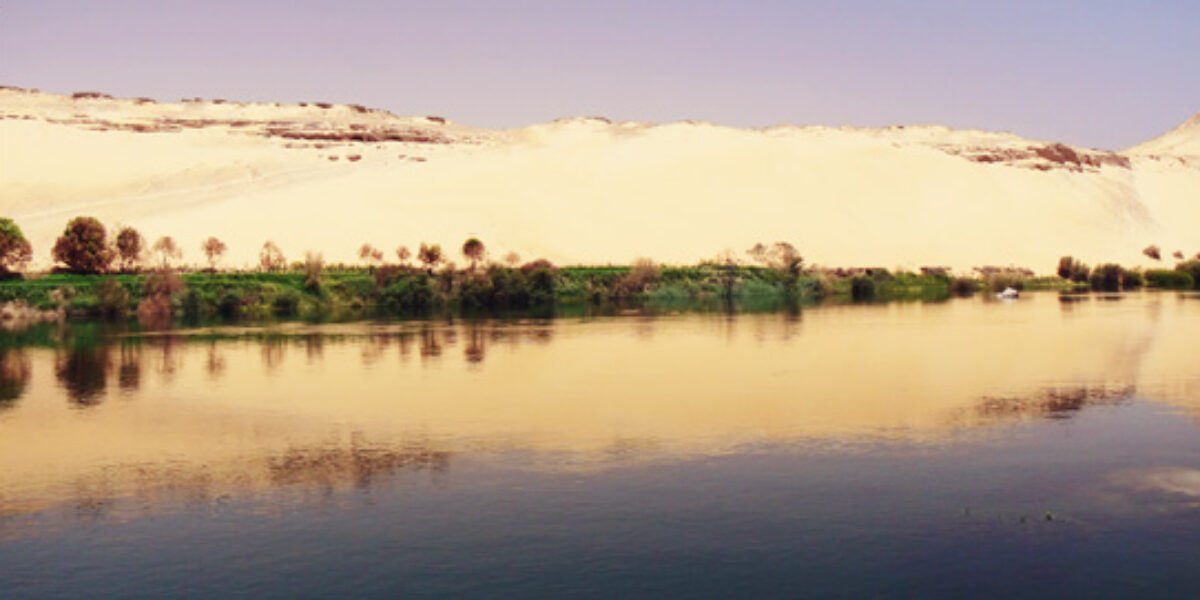Images of water pervade the Gospel stories, symbolizing chaos, rebirth, and new life. Jesus was baptized in water, walked on water, and turned water into wine. These and other narratives are grounded in the stories and experiences of the ancient Israelites, who used ideas about water to better understand their God.
Images of water pervade the Gospel stories, symbolizing chaos, rebirth, and new life. Jesus was baptized in water, walked on water, and turned water into wine. These and other narratives are grounded in the stories and experiences of the ancient Israelites, who used ideas about water to better understand their God. To consider Jesus’ relationship with water, we must first consider water imagery in the Hebrew Scriptures.
In the beginning God created the heavens and the earth. The earth was barren, with no form of life; it was under a roaring ocean covered with darkness. But the Spirit of God was moving over the water (Genesis 1:1–2, CEV).
In this story, God gives birth to creation by bringing shape and order to watery chaos. This is an important starting point in the story of the ancient Israelites. Water held diverse connotations: from the source of life, to a place of danger, to a means of cleansing and renewal. In the first creation story, God created space between the waters where the earth could flourish. In the Genesis 2 creation story, God began with barren land, and used water as a source of life and renewal for the rest of creation (Genesis 2:6–7). In both instances, whether by separating water from the land or by turning the chaos of water into a source of vitality, God demonstrates divine authority.
Later, in the Genesis flood account, God commands the waters to fill the earth from above and below, sweeping away evil, and temporarily restoring the earth to its pre-creation state. As the waters receded, God’s relationship with creation was reborn through a covenant never to destroy the earth by flood again (Genesis 9:11).
Chaos and order. Death and rebirth. These themes from the Hebrew Scriptures are also primary in the Gospels. Jesus began his ministry by stepping into the Jordan River (Matthew 3:13–17). Despite the protests of John the Baptist, Jesus was baptized. When he came up from the water, the heavens opened and the spirit of God descended upon him “like a dove.” One might well read this event as a mark of God’s entrance into the human experience. Jesus, through his experience in the water, is both diving into the chaos of humanity and demonstrating the cleansing of the soul that comes through God’s grace. Whereas in Genesis 1:9–10 God brought order to water, separating the seas from the land, here in Matthew Jesus insists on entering into the waters himself.
We see Jesus’ humanity in his self-immersion into the waters of baptism. We also see his divinity as he shows that he too can control water. Jesus quieted a chaotic storm (Mark 4:35–41), walked on water (Matthew 14:22–33), and turned water into wine (John 2:1–11) Taking the water (a reminder of God’s first covenant with the creation) and turning it into wine (a symbol of the blood of the new covenant), Jesus said, “If you are thirsty come to me and drink! Have faith in me, and you will have life-giving water flowing from deep inside you, just as the Scriptures say.” (John 7:37–39, CEV).
We drink water to nourish our bodies. We drink the wine of communion to nourish our spirits, and we are baptized with water as a symbol of transformation and redemption. Just as Christ transformed water into wine, through the cross he transformed his lifeblood into cleansing, redemptive, living water.
Looking at the Text
Read these stories of Jesus and water:
- Matthew 3:13–17
- Mark 4:35–41
- Matthew 10:40–42
- Matthew 14:22–33
- John 2:1–11
Think about the different ways Jesus interacts with water. How does water function in these stories? How do his interactions help us understand Jesus’ humanity and his divinity?
Looking at Our World
The ocean, lakefronts and riversides often provide space for peace and a sense of the sacred. But storms, pollution and flooding remind of the chaos that is found in the water. How have you experienced water as a source of chaos or fear? How have you experienced water as a means of knowing God’s presence?
In the western world, we are accustomed to having access to clean drinking water at the turn of a tap. Yet more than one billion of God’s people lack immediate access to clean, safe water and two million people die each year due to diseases carried through contaminated water. The quest for clean water consumes the time, energy and resources of many of the world’s poorest people. Children and women spend time and energy searching for and carrying water rather than going to school and participating in community. Water is becoming big business in the developing world, as entrepreneurs seek ways to privatize already limited water supplies.
Is water sacred? What should the role of the church be in providing access to clean, living water for the world’s poor? Re-read Matthew 10:40–42. What are the theological implications of withholding access to clean water?
Jenny Phillips is Coordinator for Continuing Education and Academic Outreach at Drew University Theological School in Madison, NJ, and she writes resources for outdoor ministries and churches. She has a Master of Divinity from Union Theological Seminary in New York, NY.




